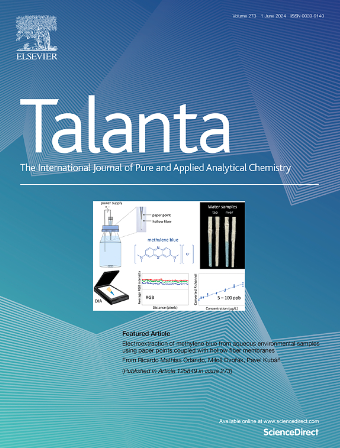Nanomaterials-mediated electrochemical detection of neutrophil gelatinase-associated lipocalin for chronic kidney disease: Advances, challenges, and future prospects
IF 5.6
1区 化学
Q1 CHEMISTRY, ANALYTICAL
引用次数: 0
Abstract
Chronic kidney disease (CKD) is characterized by a gradual and permanent deterioration in kidney function, resulting in disruption of the body's internal balance. Traditional diagnostic methods based on serum metabolites often suffer from inaccuracy for CKD diagnosis due to interference from factors such as age, gender, and comorbidities. Neutrophil gelatinase-associated lipocalin (NGAL) is considered an effective clinical marker for early and reliable CKD diagnosis due to its rapid elevation in both serum and urine following renal tubular injury. Among various diagnostic strategies, electrochemical (EC) sensing stands out for its high sensitivity, reproducibility, and suitability for complex biological matrices. The integration of nanomaterials (NMs) with EC platforms further enhances detection performance, enabling precise, real-time monitoring of NGAL levels. This review systematically assesses recent progress in EC-based NGAL biosensors, compares NGAL with other CKD biomarkers, and highlights key design parameters, current limitations, and future opportunities for clinical translation. It specifically presents the unique relevance of NGAL for early CKD diagnosis, followed by a brief discussion on the distinctive advantages of NMs in enhancing EC sensing potentials. Various types of EC biosensors developed based upon potentiometric, amperometric, and conductometric principles are then examined in detail. The review concludes with insights into the current challenges hindering NGAL sensor development and prospective strategies for advancing their clinical applicability.

纳米材料介导的慢性肾病中性粒细胞明胶酶相关脂钙蛋白的电化学检测:进展、挑战和未来前景
慢性肾脏疾病(CKD)的特点是肾功能逐渐和永久性恶化,导致身体内部平衡的破坏。由于年龄、性别、合并症等因素的干扰,基于血清代谢物的传统诊断方法对CKD的诊断往往存在不准确性。中性粒细胞明胶酶相关脂钙蛋白(NGAL)被认为是早期可靠诊断CKD的有效临床标志物,因为它在肾小管损伤后的血清和尿液中都能迅速升高。在各种诊断策略中,电化学(EC)传感以其高灵敏度、重复性和对复杂生物基质的适用性而脱颖而出。纳米材料(NMs)与EC平台的集成进一步提高了检测性能,实现了对NGAL水平的精确、实时监测。本综述系统地评估了基于ec的NGAL生物传感器的最新进展,将NGAL与其他CKD生物标志物进行了比较,并强调了关键的设计参数、当前的局限性和临床转化的未来机会。它特别介绍了NGAL与早期CKD诊断的独特相关性,然后简要讨论了NMs在增强EC传感电位方面的独特优势。各种类型的EC生物传感器开发基于电位,安培,电导原理,然后详细检查。该综述总结了当前阻碍NGAL传感器发展的挑战和提高其临床适用性的前瞻性策略。
本文章由计算机程序翻译,如有差异,请以英文原文为准。
求助全文
约1分钟内获得全文
求助全文
来源期刊

Talanta
化学-分析化学
CiteScore
12.30
自引率
4.90%
发文量
861
审稿时长
29 days
期刊介绍:
Talanta provides a forum for the publication of original research papers, short communications, and critical reviews in all branches of pure and applied analytical chemistry. Papers are evaluated based on established guidelines, including the fundamental nature of the study, scientific novelty, substantial improvement or advantage over existing technology or methods, and demonstrated analytical applicability. Original research papers on fundamental studies, and on novel sensor and instrumentation developments, are encouraged. Novel or improved applications in areas such as clinical and biological chemistry, environmental analysis, geochemistry, materials science and engineering, and analytical platforms for omics development are welcome.
Analytical performance of methods should be determined, including interference and matrix effects, and methods should be validated by comparison with a standard method, or analysis of a certified reference material. Simple spiking recoveries may not be sufficient. The developed method should especially comprise information on selectivity, sensitivity, detection limits, accuracy, and reliability. However, applying official validation or robustness studies to a routine method or technique does not necessarily constitute novelty. Proper statistical treatment of the data should be provided. Relevant literature should be cited, including related publications by the authors, and authors should discuss how their proposed methodology compares with previously reported methods.
 求助内容:
求助内容: 应助结果提醒方式:
应助结果提醒方式:


